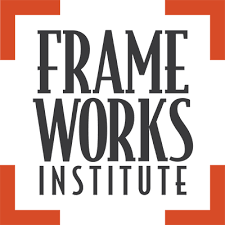FrameWorks Institute Maps the Gaps on Foster Youth
August 8, 2019 Our friends at the FrameWorks Institute recently released a pair of studies on transition age foster youth—adolescents ages 16-24 who are placed in foster care during that time frame or who must leave the system because their age makes them ineligible for public supports.
Our friends at the FrameWorks Institute recently released a pair of studies on transition age foster youth—adolescents ages 16-24 who are placed in foster care during that time frame or who must leave the system because their age makes them ineligible for public supports.
“Telling a New Coming-of-Age Story: Mapping the Gaps between Expert and Public Understandings of Transition Age Youth” provides experts’ views on issues including the challenges transition age foster youth face and how we can support them. It also translates the public’s cultural models or “implicit understandings, assumptions, and patterns of reasoning—that shape public thinking about adolescents in foster care and transition age youth” and outlines implications for communicators. As FrameWorks explains, understanding these cognitive shortcuts “allows communicators to frame messages to activate productive models, background unproductive ones, and fill in understanding where needed.”
FrameWorks then maps overlaps and gaps in understanding between experts and the public and identifies opportunities for reframing, offering initial recommendations to increase Americans’ understanding of transition age youth to “help build support for needed solutions and seed a more fertile environment for policymaker action.”
FrameWorks’ preliminary recommendations align well with those of the Building Well-Being Narrative and reframing for youth development. Key takeaways include:
- Offer clear definitions of “transition age youth” and other “insider” terminology and explain the basics of the foster care system. If the public doesn’t understand the language we use and the system we’re addressing, they are likely to disengage from the conversation.
- Avoid crisis messaging. Crisis framing overwhelms the public with the problems, making it harder to see and be motivated to work towards the solutions.
- Talk about the potential of adolescents in or transitioning out of the foster care system, not just their challenges. The public defaults quickly to thinking of youth in the foster care system as suffering from traumas that have caused permanent, insurmountable harm.
- Emphasize that transitioning out of the foster care system is a process that should extend over several years, just as many young people rely on their parents for support well into their twenties.
- Be specific and solutions-focused. The public needs to know that there are effective services and policies that improve outcomes for adolescents in and transitioning out of the foster care system.
The second study, “Stuck in Crisis: Media and Organizational Discourse on Foster Care and Transition-Age Youth“, analyzes media coverage and organizations’ communications on transition age youth. Among the seven findings are that the media portrays the child welfare system as in crisis and focuses on individual stories. FrameWorks discusses the implications of each finding and offers seven recommendations for communicators, including “frame foster care as a social issue” and “rebalance the discussion about outcomes.”
The Conrad N. Hilton Foundation sponsored the research.

